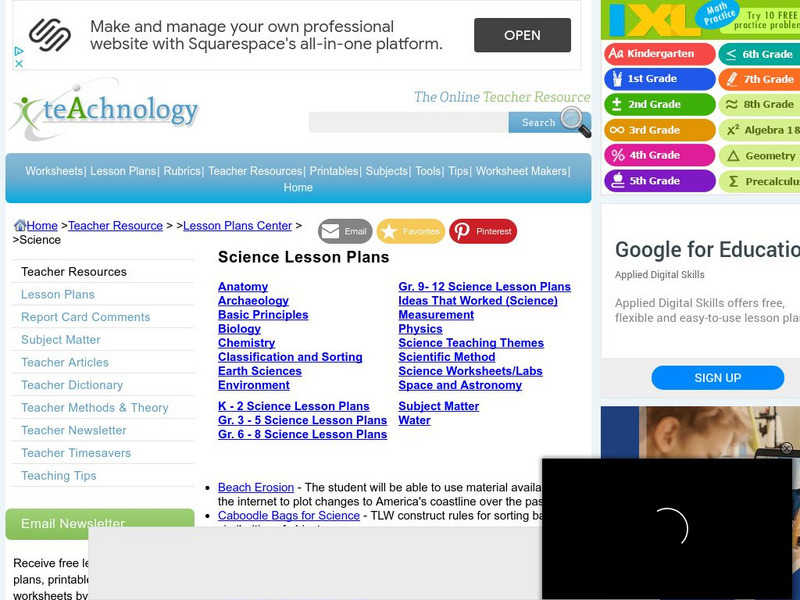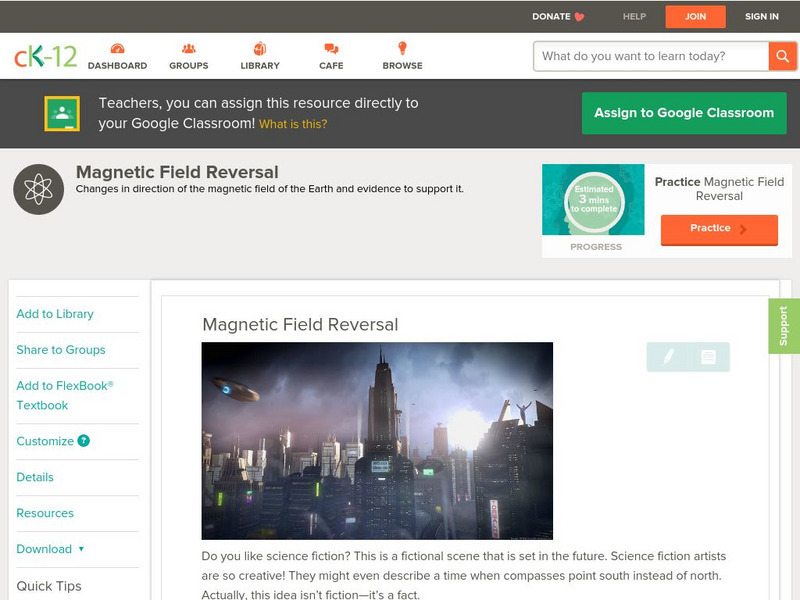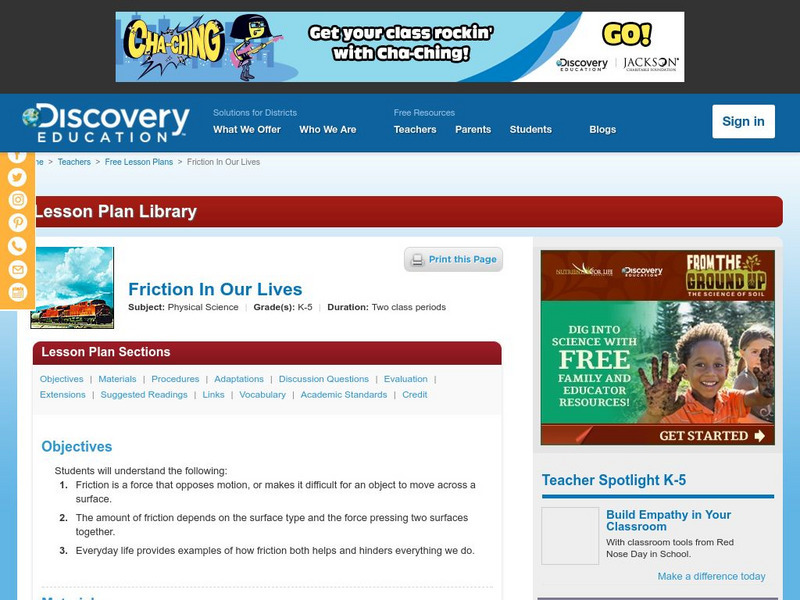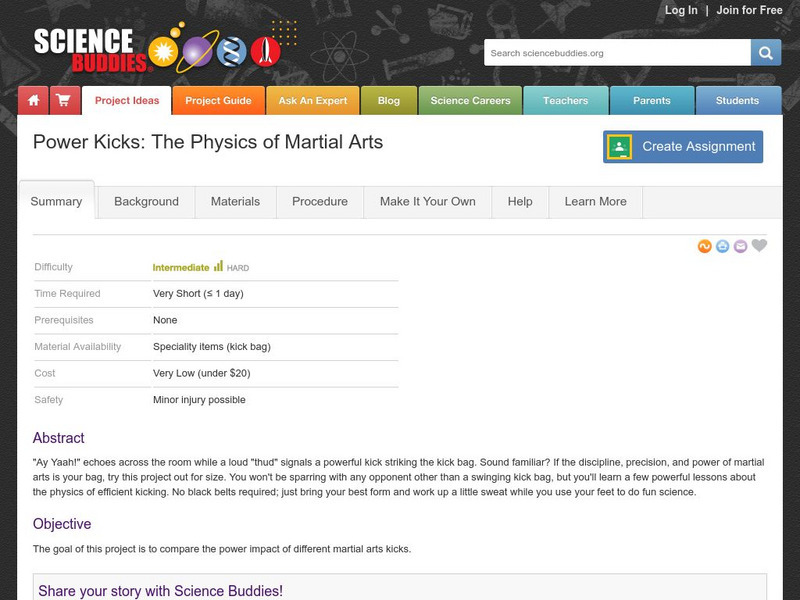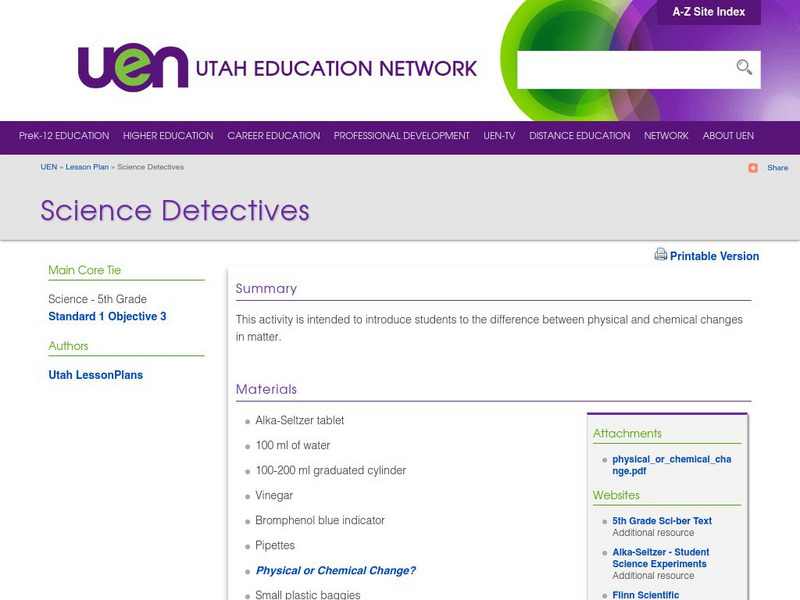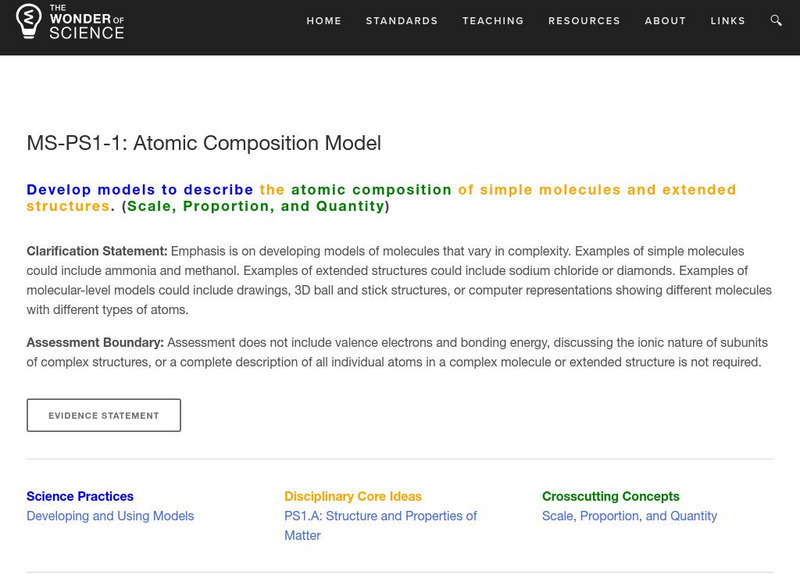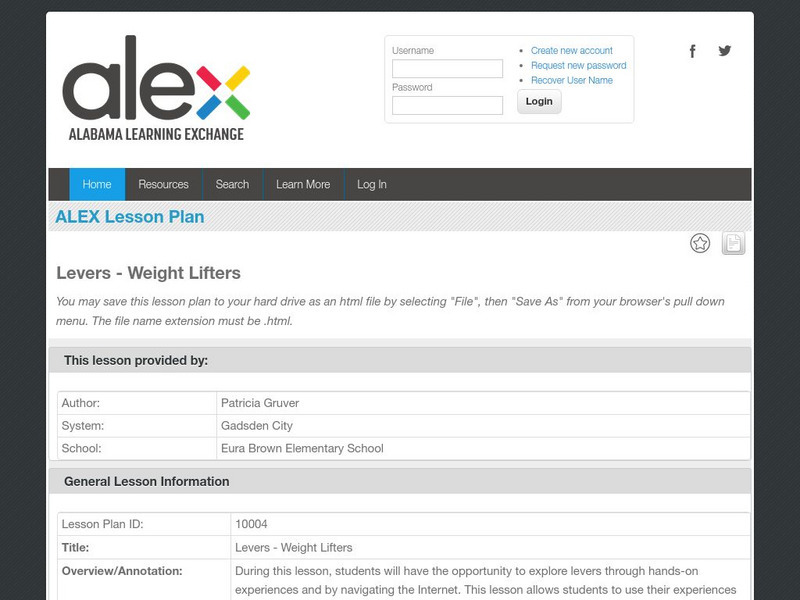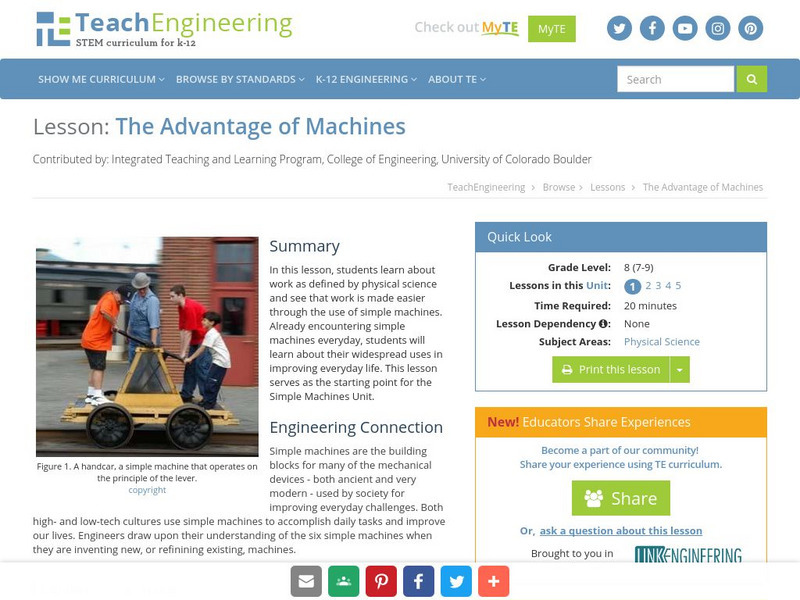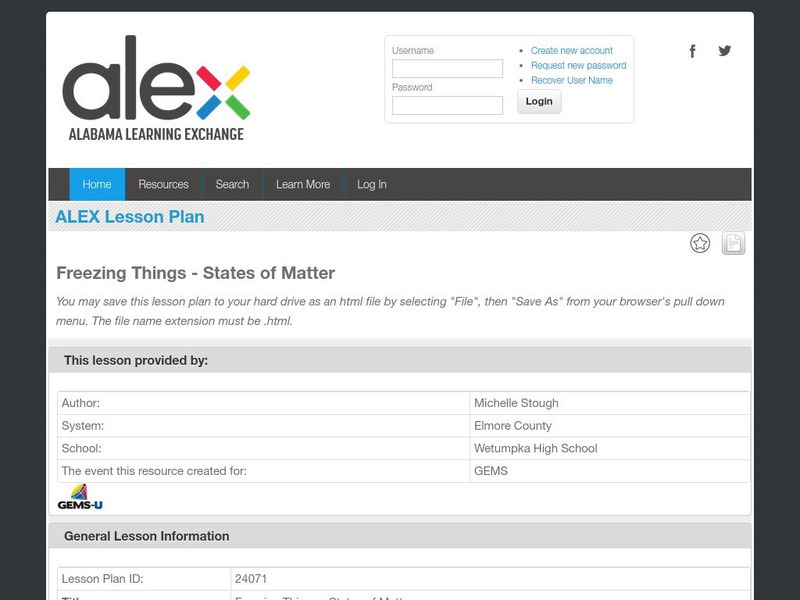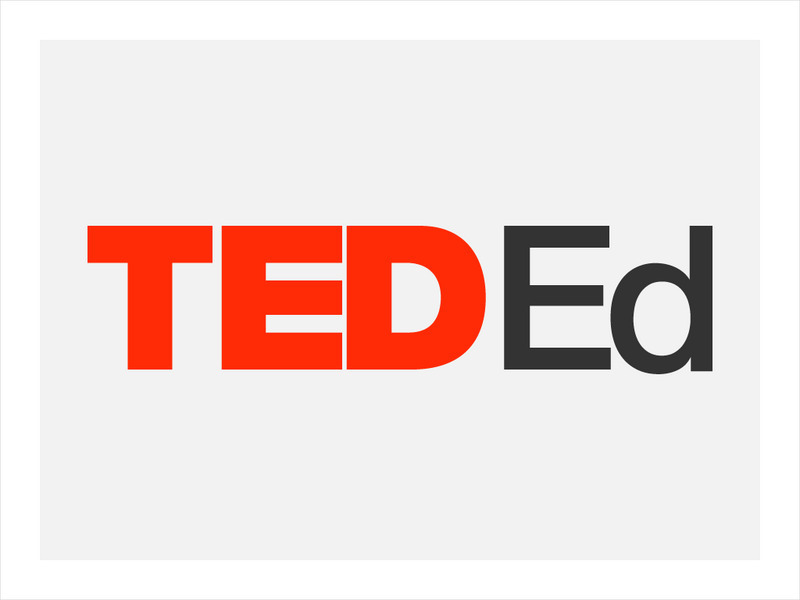Teachnology
Teachnology: Science Lesson Plans
Great lesson plans covering a wide-range of science-related subjects. A wonderful resource for wonderful teachers!
American Chemical Society
American Chemical Society: Science for Kids: Chemical and Physical Change
Engaging hands-on science lessons for grades 2-6 on chemical and physical changes.
CK-12 Foundation
Ck 12: Physical Science: Magnetic Field Reversal
[Free Registration/Login may be required to access all resource tools.] Discusses what a magnetic field reversal is and the evidence that this has happened with the Earth.
Discovery Education
Discovery Education: Friction in Our Lives
Help students understand friction in this hands-on lesson plans for students K-5.
Science Buddies
Science Buddies: Power Kicks: The Physics of Martial Arts
If the discipline, precision, and power of martial arts is your bag, try this project out for size. You won't be sparring with any opponent other than a swinging kick bag, but you'll learn a few powerful lessons about the physics of...
PBS
Pbs Learning Media: Matter's Physical Properties: Interactive Lesson
In this interactive lesson, learn what the "physical properties" of matter are and how can they be measured and observed.
TeachEngineering
Teach Engineering: The Science of Swinging
Students learn what a pendulum is and how it works in the context of amusement park rides. While exploring the physics of pendulums, they are also introduced to Newton's first law of motion - about continuous motion and inertia.
Other
Magnet Lab: Physics Lessons by Science Joy Wagon
These physics lessons and tutorials are designed to be a resource for learning introductory level, algebra-based physics. Organization is by topic, but a search option is available for quickly finding specific information. Although most...
Utah Education Network
Uen: Science Detectives
Learners are given a scenario for this lesson where they must use investigative skills like a detective would to decide whether changes that happen to objects in the story are physical or chemical. They then conduct an experiment with...
Sophia Learning
Sophia: Physics: Fluid Force Integral Calculation
Created to teach students of the 21st century, SOPHIA is bringing the 8 parts of speech straight to your fingertips. Become the commander of your own learning experiences as you take part in this interactive lesson,
TED Talks
Ted: Ted Ed: Gridiron Physics: Scalars and Vectors
An unbelievable play on an American football field is the perfect backdrop for understanding crucial physics concepts. Michelle Buchanan goes play-by-play on the vectors, the scalars, and the glory of a downright scientific touchdown....
The Wonder of Science
The Wonder of Science: Ms Ps1 1: Atomic Composition Model
A collection of lesson plans for helping young scholars understand atomic composition. Site uses work samples, phenomena, assessment templates, and videos to plan lessons to describe the atomic composition of simple molecules.
Utah Education Network
Uen: I'm So Bright! I Wear My Shades Indoors!
This lesson engages students in learning about light through multiple sources. Students will learn how light is produced, reflected, refracted, and separated. Students will communicate their findings through an independent project that...
Science and Mathematics Initiative for Learning Enhancement (SMILE)
Smile: Electromagnets (Grades 3 and 4)
This lesson helps students to understand the difference between magenets and electromagnets. They will also create an electromagnet.
Alabama Learning Exchange
Alex: Levers Weight Lifters
During this lesson, students will have the opportunity to explore levers through hands-on experiences and by navigating the Internet. This lesson allows students to use their experiences to determine how levers and other simple machines...
TeachEngineering
Teach Engineering: The Advantage of Machines
In this lesson, young scholars learn about work as defined by physical science and see that work is made easier through the use of simple machines. Already encountering simple machines everyday, students will be alerted to their...
Science and Mathematics Initiative for Learning Enhancement (SMILE)
Smile: Objects Race
In this lesson plan grab a slope and different objects. Roll the objects down the slope and record which is the fastest. Students analyze the features of the objects that make them slow or fast.
Alabama Learning Exchange
Alex: What's the Matter: A Sinker or Floater?
Students will explore matter that sinks or floats when submerged in water and that matter is categorized as either a sinker or a floater. Students will work actively in small, cooperative learning groups as well as gather in a whole...
Science and Mathematics Initiative for Learning Enhancement (SMILE)
Smile: Crystal Painting
From the Science and Mathematics Initiative for Learning Enhancement (SMILE) program. A lesson plan in which students explore the nature and structure of a variety of naturally occurring crystals, such as quartz, fluorite, citrine,...
Alabama Learning Exchange
Alex: Minerals
The students will gain information on the five characteristics of minerals. The information can be related to nonrenewable resources. This lesson should facilitate discussion on the difference between precious gems and semi-precious...
Alabama Learning Exchange
Alex: What's the Matter: Concentration Game
What's the Matter? is a guided inquiry lesson on classification of matter, physical and chemical properties, and physical and chemical changes. There are two parts to this lesson: (a) concentration game for definitions and (b)...
Alabama Learning Exchange
Alex: Freezing Things: States of Matter
The class will go back over the Power Point presentation on chemical and physical properties. The teacher will then conduct numerous liquid nitrogen demos. This instructional activity is used early in the Chemistry course. The students...
Michigan Reach Out
Newton's Apple: Soccer
Learning physics can help you win your next soccer game as well as prepare you for your science studies.
TED Talks
Ted: Ted Ed: How Quantum Mechanics Explains Global Warming
You've probably heard that carbon dioxide is warming the Earth. But how exactly is it doing it? Lieven Scheire uses a rainbow, a light bulb and a bit of quantum physics to describe the science behind global warming. [5:01]
